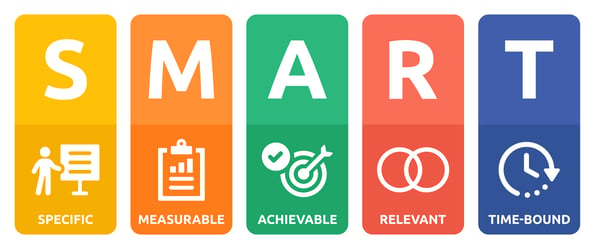It's that time of year once more! Time to settle in, put on your thinking caps, and establish goals to pursue throughout the entire year.
However, if you want your safety resolutions to be more successful than your laundry list of abandoned New Year’s resolutions, you can’t approach your safety goals like a wish list. Simply jotting down aspirations without a concrete plan will lead to the same fate as those forgotten resolutions. Instead, you need to treat your safety goals with the seriousness and dedication they deserve. This means crafting a detailed plan that outlines the steps necessary to achieve each goal, considering potential obstacles, and preparing solutions in advance.
Let’s say you want to reach goal zero: zero injuries, zero incidents. It’s a noble goal, representing the pinnacle of workplace safety, but you’ll never conquer it unless you have a strategy and a goal written for success. This involves not only setting clear objectives but also continuously monitoring progress and making adjustments as needed. Here’s how to be more effective in determining yearly safety goals, ensuring they are not just dreams but achievable targets.
Make Your Goals SMART
The best place to start is by setting SMART goals. Most of us are familiar with the concept, yet all too often, we neglect the details of SMART goals when writing our yearlong objectives. This oversight can lead to vague and unachievable targets that fail to drive meaningful progress. By focusing on the specifics of each component, you can create a clear roadmap for success.
SMART goals are:
- Specific
- Measurable
- Achievable
- Relevant
- Time-bound

For example, saying you want to have fewer workplace safety incidents isn’t a SMART goal. But you can make it SMART if you narrow down the goal to a specific incident category, state by how much you want the incident number reduced, select a reasonable number for your workplace, and set clear deadlines to check your benchmarks.
Additionally, consider involving your team in the goal-setting process. By gathering input from various departments, you can gain insights into specific safety challenges they face and tailor your goals to address these issues effectively. This collaborative approach not only ensures that the goals are comprehensive and realistic but also fosters a sense of ownership and commitment among employees, increasing the likelihood of achieving the desired outcomes.
Make The Goals Realistic and Appropriate
Be sure to focus on setting goals that are both attainable and pertinent to your organization.
While it might be overly ambitious to aim for the complete eradication of workplace incidents within a year, you can realistically aim to decrease the incident rate by, say, 10%.
Additionally, ensure that your objectives align with your company's specific needs and operational environment. For instance, if your employees do not handle chemicals, it would be irrelevant to establish a goal concerning chemical hazards. Similarly, if your company is targeting a particular area of growth, setting goals unrelated to that focus would be counterproductive.
To further enhance the relevance and achievability of your goals, consider conducting a thorough assessment of your current safety practices and resources. This evaluation can help identify areas where improvements are most needed and feasible. By understanding the unique challenges and strengths of your workplace, you can tailor your goals to not only address existing issues but also leverage your company's capabilities, ensuring that your safety objectives are both practical and impactful.
Encourage All-Around Involvement
No matter what objectives you establish, it's crucial to engage the entire workforce to implement them successfully. This includes every single person.
Excluding lower-level employees can result in their disconnection from the goals. On the other hand, if management is not actively involved, it sends a message to the broader workforce that leadership is not genuinely committed to achieving these goals.
To foster comprehensive involvement, initiate conversations with everyone and include them in the process from the start. Each individual should have the opportunity to express their thoughts, and every opinion should be valued. By doing so, you not only ensure a unified effort but also cultivate a culture of safety and collaboration.
Plus, this helps bolster a safety culture going into the new year, especially if you follow-through on your goals and continue to show that your safety goals are a priority.
Are You Determining Yearly Safety Goals?
When setting your yearly safety goals, having reliable safety data is essential as a foundation.
EHS's Insight's safety software is designed to grow alongside your needs, enabling you to collect the crucial data required for informed decision-making, monitor your progress, and enhance your entire EHS program. By leveraging our software, you can ensure that your safety initiatives are both effective and efficient. Interested in discovering how our software can support your objectives, whether they're ambitious or modest?

